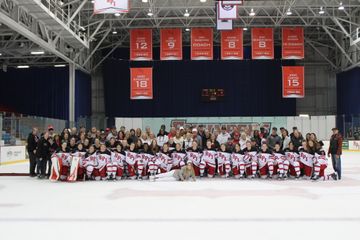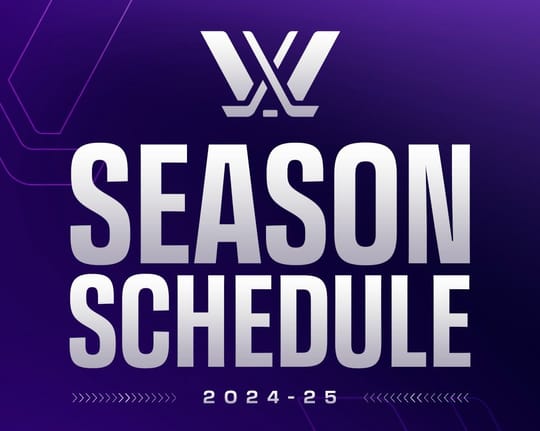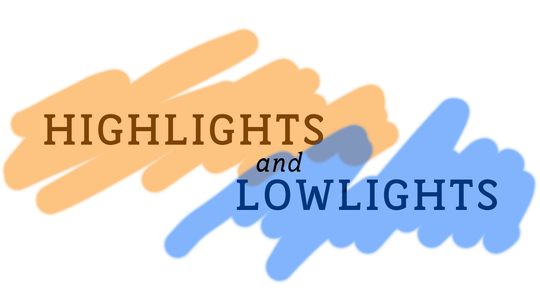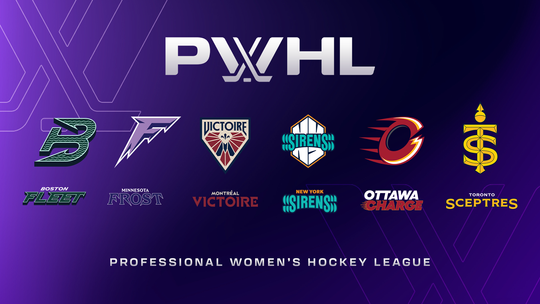A PWHL/PWHLPA memo, which was sent to players in late September 2023, proposed a 3% agent fee cap for all salaries above $50,000 and proposes that no agent fee shall be collected for a contract under $50,000. It also provides a 20% fee cap for "other services." [1] The memo also outlines plans to form an agent certification program, which will require a registration fee, which is in line with the practices of other professional sports leagues. The memo is non-binding and does not necessarily reflect what regulations will be regarding player-agent relationships in the PWHL.
I wanted to find out more about how the player-agent relationship works, how other leagues handle agent relationships, and what the memo indicates in the current context of women's hockey. To learn more, I spoke to Brant Feldman, who operates American Group Management, and Eleni Demestihas, who operates Hecate Sports Group, about the player-agent relationship, the memo, and what types of services agents provide. Feldman and Demestihas are both hockey agents representing clients seeking their next roster spots in the PWHL. Through phone conversations with them, and original research, I've tried to answer several questions I had about sports agents and PWHL contracts.
What is a player agent? What do player agents actually do?
Player agents provide a variety of client services to professional athletes. The one most fans know about is the contract negotiation piece, for which agents usually take a percent commission of the value of a contract. It's an agent's job to know what type of salary a player can command based on comparable players – so they need to have a strong understanding of their client's style of play, and know the sport on a deep level. They should be able to name comparable players and their salary ranges, and they should know a lot about the logistical aspects of being a player, like traveling, moving in the event of a trade, and possible tax situations. They also need to know a league's CBA and relevant contract laws.
Player agents also may also negotiate sponsorships, appearances, and endorsement deals for their clients, which may carry different fee regulations. Agents might also provide clients with financial advising or money management services, which can be especially useful for international players who might have income in different countries and currencies.
When I asked Eleni Demestihas to explain what she does for clients and what the benefit is of having an agent, she said: "It depends."
Demestihas said that when representing clients in the PHF, she often had conversations with GMs that were not about money, but more about the player's desired role – like can she expect to play in the top six? Is there room for this player on the top PP unit? The playing contract that would ultimately result from those conversations had more to do with stuff happening on the ice than a dollar amount. But getting the money part right is important, too.
"I think a lot of my job is knowing what the girls want, first and foremost. And then knowing what the GMs want or think that they need. And kind of trying to make those two pieces fit together," she explained. "I think having someone whose job it is to translate what you want into words that will make someone else listen is super helpful. And it depends on the player – there are some girls who are happy to have that conversation with GMs themselves. But I think having a buffer can be really, really helpful. Because when a GM gets frustrated with me, they're frustrated with me. I mean, they might get a little bit frustrated with the girl that I'm representing. But it's much easier for the player to maintain a relationship."
With good agent representation, a player's job can be about playing their sport, working on their desired goals as an athlete, and being a good teammate. The business and legal side of sports is so much different than playing, and requires a much different attitude and skillset. That's where agents come in – to advocate for players' interests so they can focus on doing their jobs.
What is an agent certification program?
Agent certification programs exist in order to provide guardrails and guidance, better ensure ethical standards in the industry, and prevent abusive behavior, like charging predatory fees. The certification program is typically established by a players' union or the governing body of a sport.
Agents are expected to act in the best interests of their clients. In unionized leagues with certification programs, agents must abide by specific regulations in order to maintain their certification. The union often provides a standard player-agent agreement or contract – essentially, a boilerplate contract for players and agents to use that ensures all player-agent relationships are governed by the same basic terms.
Becoming a certified agent usually involves an application and registration fee, undergoing a background check, and disclosing business relationships and representation history. An agent may also be required to take an exam demonstrating their knowledge of a league's CBA, and thereafter participate in mandatory meetings and seminars to stay up to date on topics relevant to their sport and their players' union. They may also be charged an annual fee to maintain their certification status as well as access to specialized resources from the union.
Agents are often attorneys or have law degrees, but they do not necessarily need to have a specific type of education in order to act as an agent. (Though for some leagues, like the NFL, agents are expected to have a master's degree or law degree, or at least seven years of negotiating experience, prior to becoming certified.)
How do other leagues handle agent representation?
In the WNBA, which has its own agent certification program created by the WNBPA, the agent commission percentage is currently capped at 5%.
The NWSL does not have an agent certification program but is hoping to develop one during the term of its 2022-2026 CBA. Players may choose to work with agents who are certified by FIFA to act as football agents, especially if they're playing internationally and not just within the NWSL. The FIFA regulations encompass a wide range of salaries. A contract value beneath $200,000 has a 5% agent fee cap; above $200,000 is capped at 3%.
You can read the WNBA regulations about player-agent relationships on their union website, and the football agent regulations on FIFA's website.
The WNBA's salary structure is governed by years of play, with the minimum salary for a Year 1 player being $64,154 USD for the 2024 season. The maximum "supermax" salary in the WNBA is $241,984, which kicks in if the contract is being negotiated in certain exceptional circumstances, such as a rookie extension contract or a contract for a player with more than 5 years of service. Outside of supermax salaries, the maximum is $208,219.
The NWSL's minimum salary for 2024 will be $37,856 USD with a maximum cap charge per player of $200,000.
Thus, an agent negotiating a contract for a minimum-salaried player in the WNBA could expect to make $3207.70 max in fees. An agent negotiating the same for an NWSL player, if complying with the FIFA guidelines, could expect to make, at most, $1892.80 in fees.
The Premier Hockey Federation did not have an agent certification program or official public guidance from the Players' Association about agent practices. The PHFPA was also not unionized.
The practice of not charging agent fees for smaller-value contracts does happen – but primarily in minor leagues where agents and players are hoping that this is just one step on the way to something bigger. A player just getting started might find themselves not paying an agent contract fee at first, but transitioning to paying one once their contract value goes up. With the PWHL aspiring to be the top-level elite women's hockey league in the world, this scenario doesn't really apply, especially since the salary structure is designed to be flat throughout the duration of the initial CBA.
How does the current PWHL CBA structure the salary and how does this affect agent representation?
Unlike the NWSL and WNBA, the PWHL will follow a mandatory salary average rather than a salary cap and there is no salary maximum. The salary average for the first year of play in the PWHL is $55,000, meaning that for all players on the 23-player roster, the average of each of their salaries must be $55,000. Six players on the roster are required to have salaries of $80,000 or more, and the minimum salary is $35,000.
Carlie Markey at The Ice Garden provided data-driven examples of how the salary average might play out, though there are other possibilities to arrive at that average as well. Markey's model assumes that the maximum of 9 players making the league minimum will be utilized, but the average can also be achieved by loading more salary in the middle range and reserving the minimum salary only for 7th defenders, 13th forwards, and/or a potential third-string goalie.
Here is just one example. In the below charts, column 1 indicates "tier" (or where the player might appear on the depth chart), column 2 indicates position, and column 3 indicates base salary. The chart is sorted by tier.
In the above example, one player carries a $100,000 contract, and no one makes the absolute league minimum (though several come close). This model still has 11 players making under $50k – and real rosters may well surpass that total, depending on how high the top six contracts go.
There simply isn't a wide salary variation possible. The contract amounts for the rest of the roster are mathematically limited by the highest paid players. This is by design, and keeps the salary range somewhat flat for the duration of the initial CBA aside from codified 3% annual increases, which apply to most compensation (per diem, base salary, and bonuses). (The $1500/month housing stipend provided for in the CBA increases by $100/month annually, or about 6.7% after the first year.)
"Once you factor out the top six girls on each team making [$80,000 or more], the actual average is not $55,000. It's like somewhere around $46,000," said Demestihas, referring to the flat salary structure and salary average, which puts the onus on the rest of the roster to balance out the mandatory higher-end salaries. (In playing with different models for salary structure, I confirmed this math: once you eliminate the top six player contracts, the average down the rest of the roster usually ends up being between $44,000 and $47,000.) "So you end up with this problem where I think people are realizing... hey, these girls are not going to make a lot of money. And we we want them to be able to keep as much of their salaries as they can. But the CBA is already drafted, where everybody's getting the same housing stipend, regardless of their salary. Everybody's getting the same per diem. So what are the other expenses that these girls are going to have that are not already covered in the CBA? And the easy answer is their agency." While Demestihas is only speculating here, it makes sense as one possible genesis for the proposed policy.
"I don't necessarily see it as gospel... To me, it was a shot across the bow to say we will have some level of standards," said Feldman about the proposed policy. "There's no agent education for any of the collegiate girls, or any of the USports girls, or any of them the national team players who may not have agents right now. So to me, they needed to do something to give someone some level of guidance."
It's notable that this memo was only distributed to players and was not intended for agents or the public, but it partially leaked anyway, leading to some public consternation about whether players would be able to maintain representation. The path forward will need to strike a balance.
Both Feldman and Demestihas suggested that a flat fee structure for smaller contracts might be an option if the PA is determined to limit what agents can take from players who aren't making a lot of money to begin with.
That said, Feldman specifically felt a 5% fee cap for most contracts was fair. "I think we shouldn't be trying to reinvent the wheel here," said Feldman, citing the WNBA's 5% agent fee cap and other regulations, which have been in place since 2000. He also mentioned ECHL and AHL contracts, which are more comparable to potential PWHL salaries. "I would love to see what these other entities do, and do something that's a common sense approach." [2]
The agent certification program will also need some guardrails in place beyond the fee caps. "I think that there needs to be a standard player-agent agreement," Feldman added. "[A standard player-agent contract] supersedes anything else that a player signs with [an agency] as it relates to a player contract... Should the athlete need to make a change of representation, the rules are very explicitly defined, and the Players' Association can defend immediately if there needs to then be a potential representation change as it relates to the on-ice affairs of the athlete."
What does the PWHLPA have to say about the memo?
When reached for comment via email, PWHLPA Executive Director Brian Burke said that the union has collected feedback about the proposed regulations, and that the finalized regulations and an agent certification program are still "some months" away. He stressed: "All of the proposed regulations were just that: proposed."
What is the current situation for a PWHL athlete negotiating a contract? Why is this important?
No matter how you structure salary throughout the roster, there will be a significant portion of players making under $50,000 on any given team – and those players should have access to the services of an agent. The reality of what players' needs will be should become apparent very quickly, as training camps get underway in November and general managers look to complete their rosters.
Several teams have already announced signings ahead of training camp. Currently, agents will be negotiating on behalf of players based on whatever terms they have agreed to already, regardless of the memo, and we may not see the PWHLPA's fully fleshed-out agent guidelines or certification program until next year's free agency period – which is a good thing, since it gives the PWHLPA time to get feedback from players and agents.
Having fee caps for agents working with players' union members is a good thing, according to both Demestihas and Feldman. Those fee caps should be designed to ensure that players receive enthusiastic and fair representation, and the regulations need to be clear to ensure that players and agents understand, roughly, what the contract negotiation process will look like and what the agent's compensation will be. Agency representation does come at a cost, but it's a service that more and more athletes will need if the PWHL executes on its promise to be the one league for the best players in the world.
Agent services are just as valuable to players in middle or bottom six roles as they are to the biggest names in hockey. Demestihas used NHL free agency as an example. "There's a period of free agency where the top star players get snatched up. And then there's a huge quarters of free agency where all of the middle six guys are looking for a place to play. If those guys didn't have agents, a lot of them wouldn't play," Demestihas said. "And a lot of them who would play would just play at the first place that they got an offer and [not have the ability] to find a team that's actually a really good fit for them."
PWHL training camp rosters were released on October 16th (more on that from us shortly!) and camps will officially begin on November 15th. The contracts that emerge from training camps will be extremely informative for all parties involved – the union, players, general managers, and agents alike. The PWHLPA is likely already taking notes for its next CBA negotiations in 2031, and we're about to learn a lot about what works and what doesn't in the coming months.
[1] The 20% cap for "other" agent services likely refers to endorsement deals, for which 20% is the high end of the industry standard. Broadcast contracts typically come in at 10%, and many current and former women's hockey players have made forays into broadcasting already.
[2] A request to the Professional Hockey Players' Association about any internal guidance they have regarding agent fees went unanswered as of October 30. The PHPA represents AHL and ECHL players. You can read about the PHPA agent certification program here.
(Photo: Monstera Production/Pexels)







